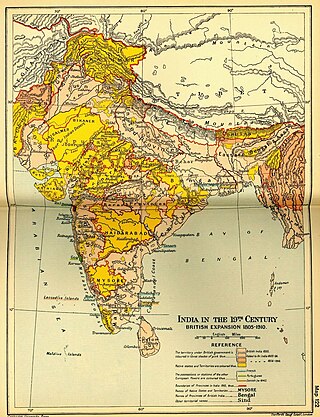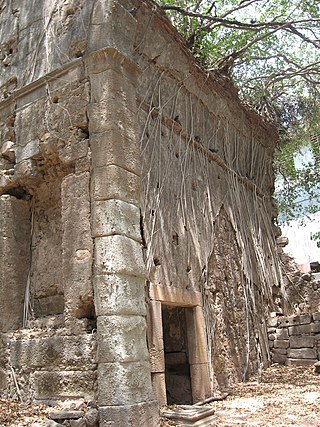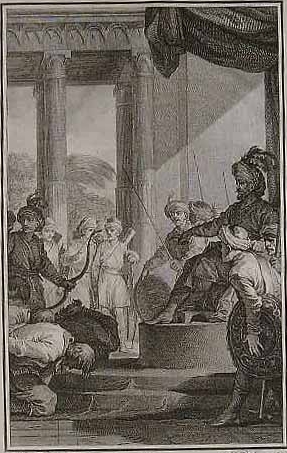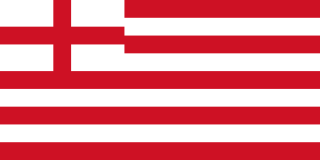
The East India Company (EIC) was an English, and later British, joint-stock company founded in 1600 and dissolved in 1874. It was formed to trade in the Indian Ocean region, initially with the East Indies, and later with East Asia. The company gained control of large parts of the Indian subcontinent and colonised parts of Southeast Asia and Hong Kong. At its peak, the company was the largest corporation in the world by various measures and had its own armed forces in the form of the company's three presidency armies, totalling about 260,000 soldiers, twice the size of the British army at the time.

Company rule in India was the rule of the British East India Company on the Indian subcontinent. This is variously taken to have commenced in 1757, after the Battle of Plassey, when the Nawab of Bengal Siraj ud-Daulah was defeated and replaced with Mir Jafar, who had the support of the East India Company; or in 1765, when the Company was granted the diwani, or the right to collect revenue, in Bengal and Bihar; or in 1773, when the Company abolished local rule (Nizamat) in Bengal and established a capital in Calcutta, appointed its first Governor-General, Warren Hastings, and became directly involved in governance. The Company ruled until 1858, when, after the Indian Rebellion of 1857 and the Government of India Act 1858, the India Office of the British government assumed the task of directly administering India in the new British Raj.

The Madras Presidency or Madras Province, officially called the Presidency of Fort St. George until 1937, was an administrative subdivision (province) of British India and later the Dominion of India. At its greatest extent, the presidency included most of southern India, including all of present-day Andhra Pradesh, almost all of Tamil Nadu and parts of Kerala, Karnataka, Odisha and Telangana in the modern day. The city of Madras was the winter capital of the presidency and Ooty was the summer capital.

The Bombay Presidency or Bombay Province, also called Bombay and Sind (1843–1936), was an administrative subdivision (province) of British India and later the Dominion of India, with its capital in the city that came up over the seven islands of Bombay. The first mainland territory was acquired in the Konkan region with the Treaty of Bassein. Poona was the summer capital.

The provinces of India, earlier presidencies of British India and still earlier, presidency towns, were the administrative divisions of British governance on the Indian subcontinent. Collectively, they have been called British India. In one form or another, they existed between 1612 and 1947, conventionally divided into three historical periods:

Sir George Oxenden (1620–1669) was the first governor of the Bombay Presidency during the early rule of the British East India Company in India.
Robert Cowan was an Irish colonial administrator and the East India Company's Governor of Bombay from 1729 to 1734. He was a collateral ancestor of the Marquesses of Londonderry through the marriage of his sister, Mary Cowan, to Alexander Stewart, father of Robert Stewart, 1st Marquess of Londonderry.

Bombay, also called Bom Bahia or Bom Baim in Indo-Portuguese creole, Mumbai in the local language; is the financial and commercial capital of India and one of the most populous cities in the world. It's also the cosmopolitan city centre of the Greater Bombay Metropolitan Area, and the cultural base of the Bollywood film industry. At the time of arrival of the Portuguese Armadas, Bombay was an archipelago of seven islands. Between the third century BCE and 1348, the islands came under the control of successive Hindu dynasties. The Delhi Sultanate had been ruling the area along with Chaul, New Bombay (Thana) & Damaon, with the administrative centre in Bassein (Vasai) since the raids of Malik Kafur in the Konkan region and across the Indian subcontinent. This territory in North Konkan along with the Bombay islands were later taken over by the Sultan of Guzerat from 1391 to 1534, when he had declared the end of the suzerainty to Delhi, after the Timurid invasion of it. Growing apprehensive of the power of the Moghal emperor Humayun, Sultan Bahadur Shah of Gujarat was obliged to sign the Treaty of Bassein on 23 December 1534; according to which, the seven islands of Bombay, Fort San Sebastian of Bassein in strategic town of Bassein (Vasai), and its dependencies were offered to the Portuguese East Indies. The places were only later officially surrendered on 25 October 1535, by the Sultan of Guzerat.
Sir Thomas Rolt (c.1631–1710) was a British official of the East India Company, President of Surat and Governor of Bombay from 1677 to 1681. His father was Edward Rolt of Pertenhall in Bedfordshire; his mother was Edward Rolt's second wife Mary, a daughter of Sir Oliver Cromwell.

Coinage under British governance of the Indian subcontinent can be divided into two periods: East India Company (EIC) issues, pre-1835; and Imperial issues struck under direct authority of the crown. The EIC issues can be further subdivided into two subcategories: the Presidency issues, which comprise separate Madras Presidency, Bombay Presidency, and Bengal Presidency issues; and uniform coinage for all British territories from 1835 to 1858. Imperial issues bear obverse portraits of Queen Victoria, Edward VII, George V, and George VI. No British India coins were issued during the brief reign of Edward VIII.

The Anglo-Mughal war, also known as Child's war, was the first Anglo-Indian war on the Indian subcontinent.

The English overseas possessions, also known as the English colonial empire, comprised a variety of overseas territories that were colonised, conquered, or otherwise acquired by the former Kingdom of England during the centuries before the Acts of Union of 1707 between the Kingdom of England and the Kingdom of Scotland created the Kingdom of Great Britain. The many English possessions then became the foundation of the British Empire and its fast-growing naval and mercantile power, which until then had yet to overtake those of the Dutch Republic, the Kingdom of Portugal, and the Crown of Castile.
Virji Vora was an Indian merchant from Surat during the Mughal era. The East India Company Factory Records describe him as the richest merchant in the world at the time. According to English records, his personal worth is estimated to be worth 8 million rupees, a substantial amount of money at the time. He has been variously described as a "merchant prince," and a "plutocrat."
Rander is a town in Surat district in the state of Gujarat, India. Located on the bank of the Tapti River, it is 2 kilometres (1.2 mi) from the city of Surat.
Nathaniel Wyche was a British merchant and president of the English East India Company.

The Surat Agency was one of the agencies of British India in the Bombay Presidency.

Bantam Presidency was a presidency established by the British East India Company and based at the Company factory at Bantam in Java. Founded in 1617, the Presidency exercised its authority over all the Company factories in India, including the agencies of Madras, Masulipatnam and Surat. The factors at Bantam were instrumental in founding the colony of Madraspatnam in 1639 with the Fort St. George, which later grew into the modern city of Madras. The Presidency of Bantam was twice downgraded, first in 1630 before being restored in 1634 and for the second time in 1653, when owing to the hostility of Dutch traders, the Presidency was shifted to Madras.
The timeline of major famines in India prior to 1765 covers major famines in India from 1 AD to 1765 AD. The famines included here span the entirety of the Indian subcontinent, currently comprising the Republic of India, Islamic Republic of Pakistan and the People's Republic of Bangladesh. The year 1765 is chosen as the end date as that was the start of the colonial period.









